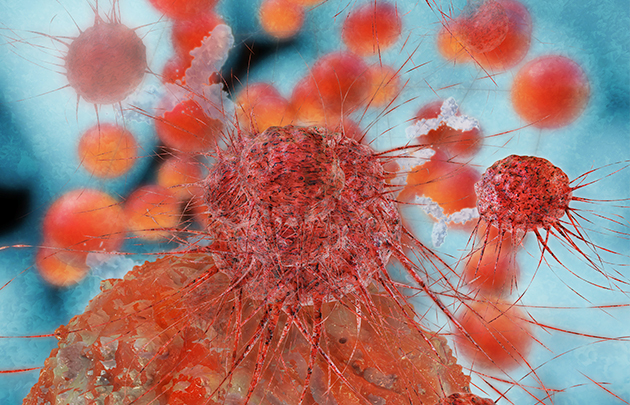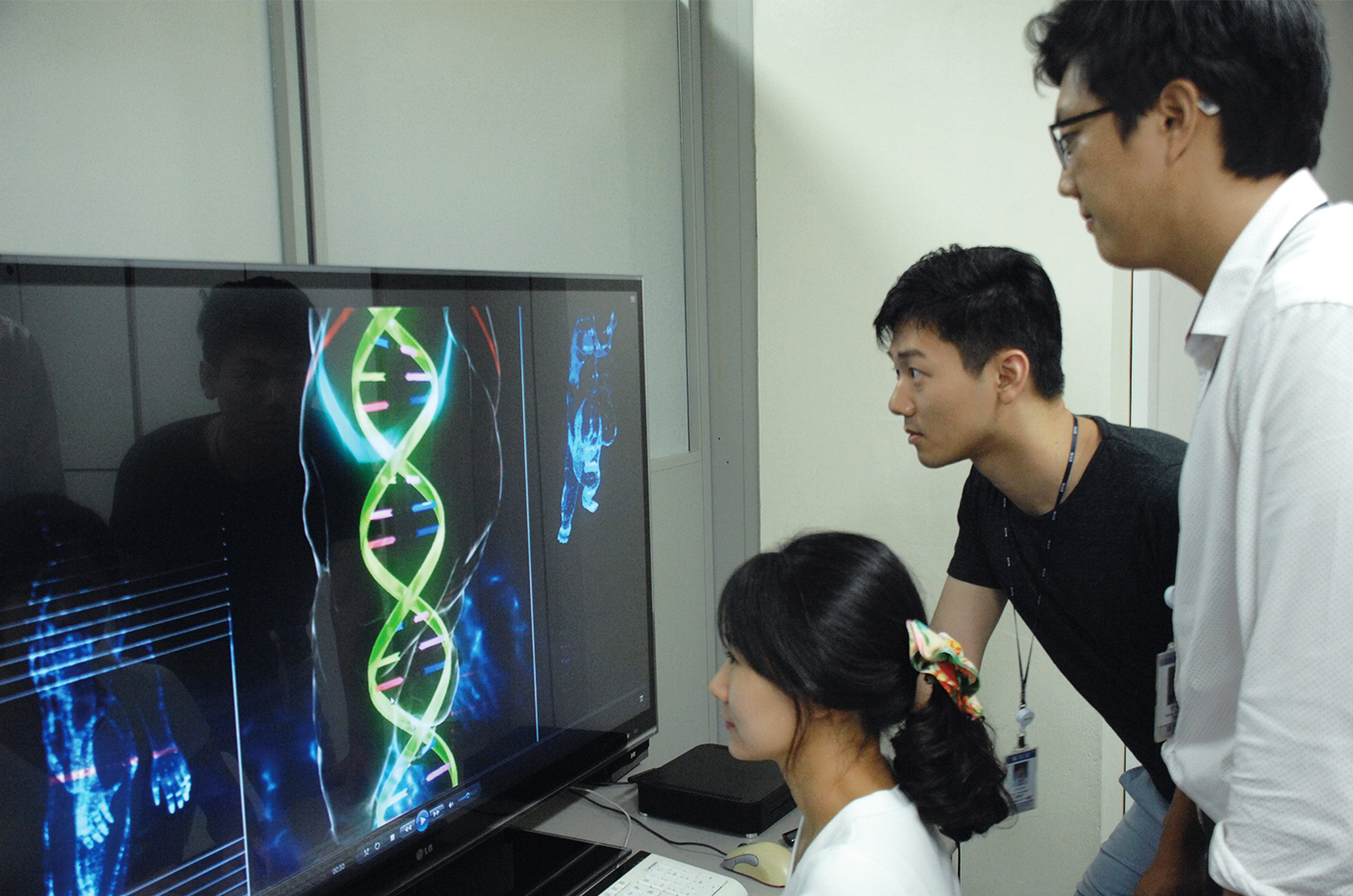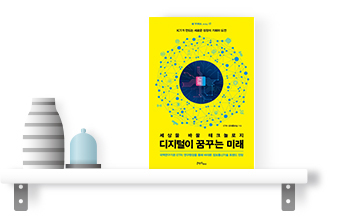VOL.57
October 2019


ICT Trend — Supercomputing and genetic analysis technology
What if
Angelina Jolie had been
born 15 years ago?
Supercomputing and genetic analysis technology
Angelina Jolie is a world-famous actress who is as dynamic in her role as an ambassadress for the United Nations High Commissioner for Refugees (UNHCR) as any of the characters in her action films. She is also famous for raising six adopted children. Recently, she visited Korea with her adopted son, who was about to begin attending Yonsei University. However, there might have been no today’s Jolie if Angelina Jolie had been born just fifteen years ago. What could be the reason for that? This edition reviews supercomputing and genetic analysis technology.


Pre-emptive removal of potential cancer with ICT
The development of supercomputing has led to the rapid advancement of genetic analysis technology. The cost of a genetic test used to be as high as trillions of won when the technology first appeared in the early 1990s. Nowadays, however, genetic tests rarely cost more than a few hundred thousand won. As such, it may not be too farfetched to say that the key to extending human life is not medicine but ICT. People usually imagine a genetic test as a kind of paternity identification and procedure like those seen in TV dramas, but genetic analysis using supercomputers actually targets diverse groups of people. For example, it analyzes a person’s genome to detect the presence of genes related with cancer and other incurable diseases. The outstanding capabilities of the latest supercomputers can be used to identify incurable human diseases and help cure them. Molecular biology has played a significant role in the development of such genetic analysis technology. In 1990, scientists worldwide kicked off the “Human Genome Project” which aimed to identify DNA consisting of 3 billion pairs of proteins. After thirteen years they finally completed the human genome map in April 2003.
Angelina Jolie’s family doctor recommended that she take the genetic test after her mother died of cancer at the relatively young age of 57. She accepted the recommendation and took a BRCA gene test, which identifies mutations in one’s genes. The test results confirmed that Jolie had a mutation of the BRCA gene, increasing significantly the risk of breast cancer. Although, generally speaking, genes can recover from damage, the BRCA1 and BRCA2 genes cannot recover from a mutation. As such, women with a BRCA1 or BRCA2 mutation have an approximately 50% risk of developing breast cancer or ovarian cancer in their lifetime. Angelina Jolie decided to reduce the risk of cancer upon her doctor’s recommendation and opted for a mastectomy in 2013. The removal of her breasts must have been an immensely difficult decision to take considering her career as an actress. Her mother, Marcia Lynne "Marcheline" Bertrand, who was also a movie actress, died of ovarian cancer at the age of 57 in 2007. Jolie’s grandmother also had a history of breast cancer. Despite such a family history, the decision to have a preventive mastectomy must have been a very difficult decision. Moreover, Jolie underwent ovarian extraction in 2015 to prevent ovarian cancer. Afterward, she disclosed that she made her decision in order to keep a promise she had made to her mother. Jolie believed in modern medicine and technology and took action. She is now a very active and healthy person.

Genome analysis using MAHA, the supercomputer developed by ETRI for biotechnology.
MAHA, an advanced high-performance computer
After undergoing the mastectomy in 2013, Jolie contributed an essay to The New York Times in which she disclosed that she could “tell my children that they don’t need to fear they will lose me to breast cancer.” At that time, there was a medical controversy over whether Jolie's surgery constituted over-treatment and response. No one knows what will actually happen in the future. However, the probability of Jolie following her mother’s and grandmother’s path would have increased had she not taken advantage of the cutting-edge technology. Jolie’s decision to undergo surgery increased public trust in genetic analysis technology and interest in genetic testing. It engendered the expression “The Angelina Effect” and led to a sharp increase in the stock prices of genetic test-related companies, as well as stimulating interest in preemptive cancer removal surgeries.
The law related to genetic treatment, enacted in Korea in June 2017, is expected to promote gene-related markets and commercialization of the related technologies. If the trend continues, we may see “My genetic map analyzed by a supercomputer” on the back of the health examination record provided by the National Health Insurance Service. The possibility of mapping one’s personal genome for just 100,000 won has also increased. In Korea, the biomarker market was created before the genetic analysis market. A biomarker is an indicator that can show changes in the body using proteins, DNA, RNA, and metabolites. It tries to detect the existence of disease-related genes by turning human blood into a DNA chip. A service that marks more than 60,000 genetic data is currently available. The biomarker service market has expanded, and one can receive the service for around 200,000 won.
High-Performance Computing (HPC) technology is becoming increasingly advanced. Supercomputers are the most advanced HPCs. MAHA is a supercomputer developed by ETRI to handle big data related to the human genome. However, it has now reached the end of its lifespan with the end of the research project. MAHA was used by the research team for more than six years from 2011. ETRI’s project included equipping MAHA with 4 petabytes (PB) of big data storage, and constructing a platform with which to analyze the cancer gene data of 2,000 people worldwide, which were secured through joint international research, simultaneously using MAHA. As such, MAHA was very helpful in analyzing human genes. MAHA has now been disassembled to provide key parts for further studies, in much the same way that people donate their organs to patients. Currently, MAHA is undergoing a transformation to create an exabyte (EB) storage from the PB class performance. Its memory and other components have been separated for other R&D programs of ETRI, which is also conducting further studies.

Development of science and technology to extend human life
Research is now being actively conducted in the life science area with a view to extending human life. Studies on genome editing technology, also called gene scissors, have been active in recent years. As its name indicates, it is a technology for detecting genes related to cancer and other incurable diseases and eliminating them. Using CRISPR gene scissors, scientists are now able to cut out genes that cause problems with great precision. CRISPR gene scissors are a method of recognizing the target gene with the CRISPR RNA as the guide, and of cleaving specific strands of DNA using Cas9 enzymes. Such gene-editing technology is expected to enable the treatment of incurable diseases such as cancer, AIDS, and Lou Gehrig's disease in the not too distant future.
The development of science and technology is also extending human lives. There have even been reports suggesting that the life expectancy of children born now will be 125 years. The advancement of medical technology and bioengineering has already played a great role in enabling humans to live longer, while the development of ICT has also contributed significantly. Henceforth, the related technologies will advance further through convergence.
Anyone who is curious about the performance ranking of supercomputers can visit the Top 500 website (www.top500.org), which lists the global top 500 supercomputers. Among the Korean supercomputers included on the list are Nurion, which was developed by KISTI and is ranked at no. 15, and Nuri and Miri, which are owned by the Korea Meteorological Administration, and are ranked at no. 99 and no. 100 respectively (as of June 2019). Although no Korean supercomputer was ranked in the top 50 just two years ago, Korea’s fifth supercomputer (Nurion) was ranked at no. 15 when it was opened. The current world no. 1 supercomputer is Summit, which was developed by IBM in the United States. China, which was confident of developing the ExaFLOPS class Tianhe model in 2018, has the no. 3 ranked supercomputer. One ExaFLOPS refers to the ability to process 1 quintillion operations per second. It is rather unfortunate that R&D investment in Korea is somewhat low, while our neighbor China is forging rapidly ahead, and is currently striving to develop quantum computers.
This article is quoted from Technology That Will Change the World, Future Brought by Digital Technology, ETRI’s Easy IT series (2018).

Future Brought by Digital Technology
Written by Kilho, Chong · ETRI's Public Relations Section Published by Contentshada
Future Brought by Digital Technology issued by ETRI aims to help readers better understand what the Fourth Industrial Revolution means to them and to introduce various ICT trends so that readers can have a fascinating glimpse of what might happen in the near future. This book will be a reliable guide for anyone who wants to learn and understand how to adapt to the rapidly changing, unpredictable world driven by technological innovations and flexibly respond to risks that might be faced going forward.



